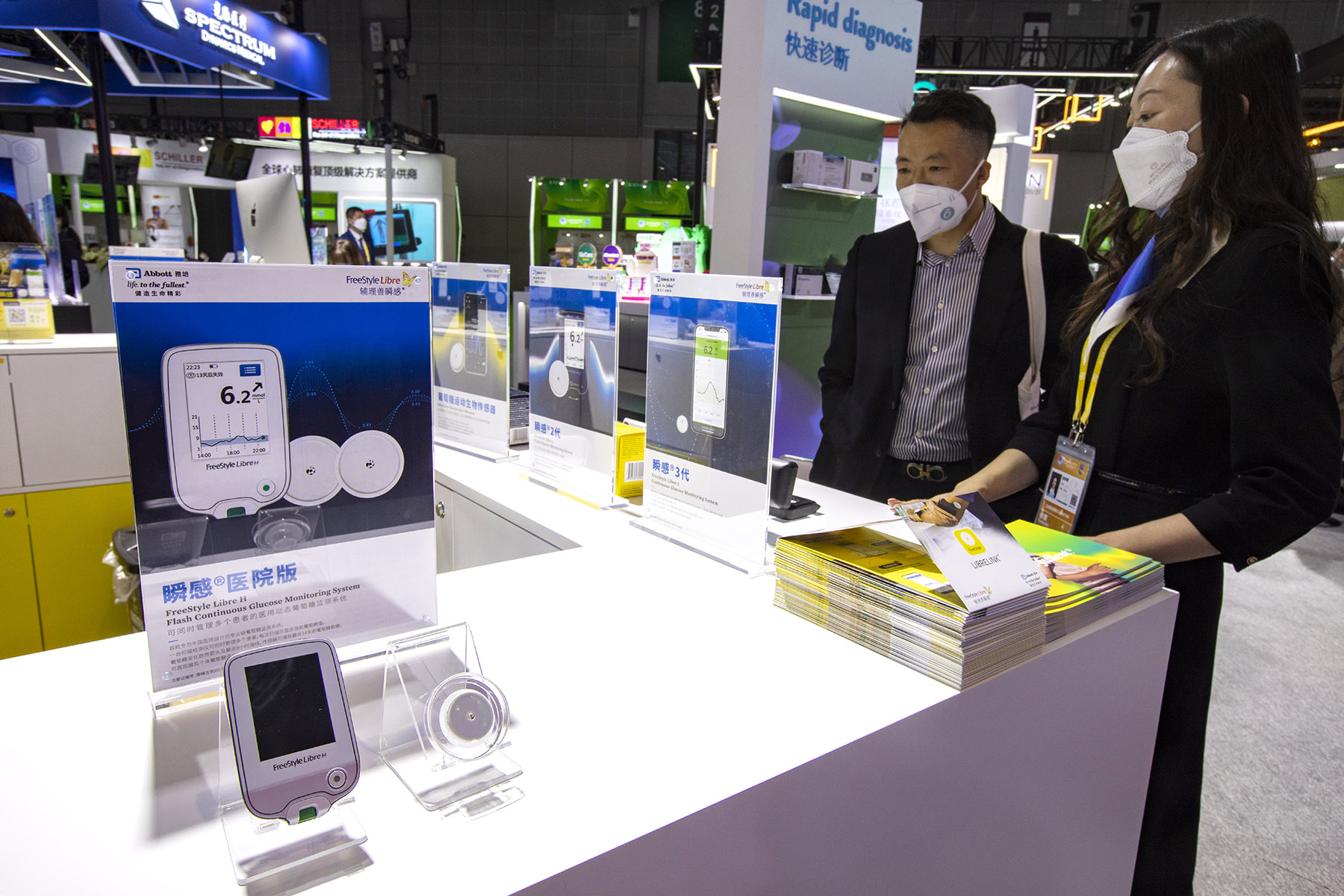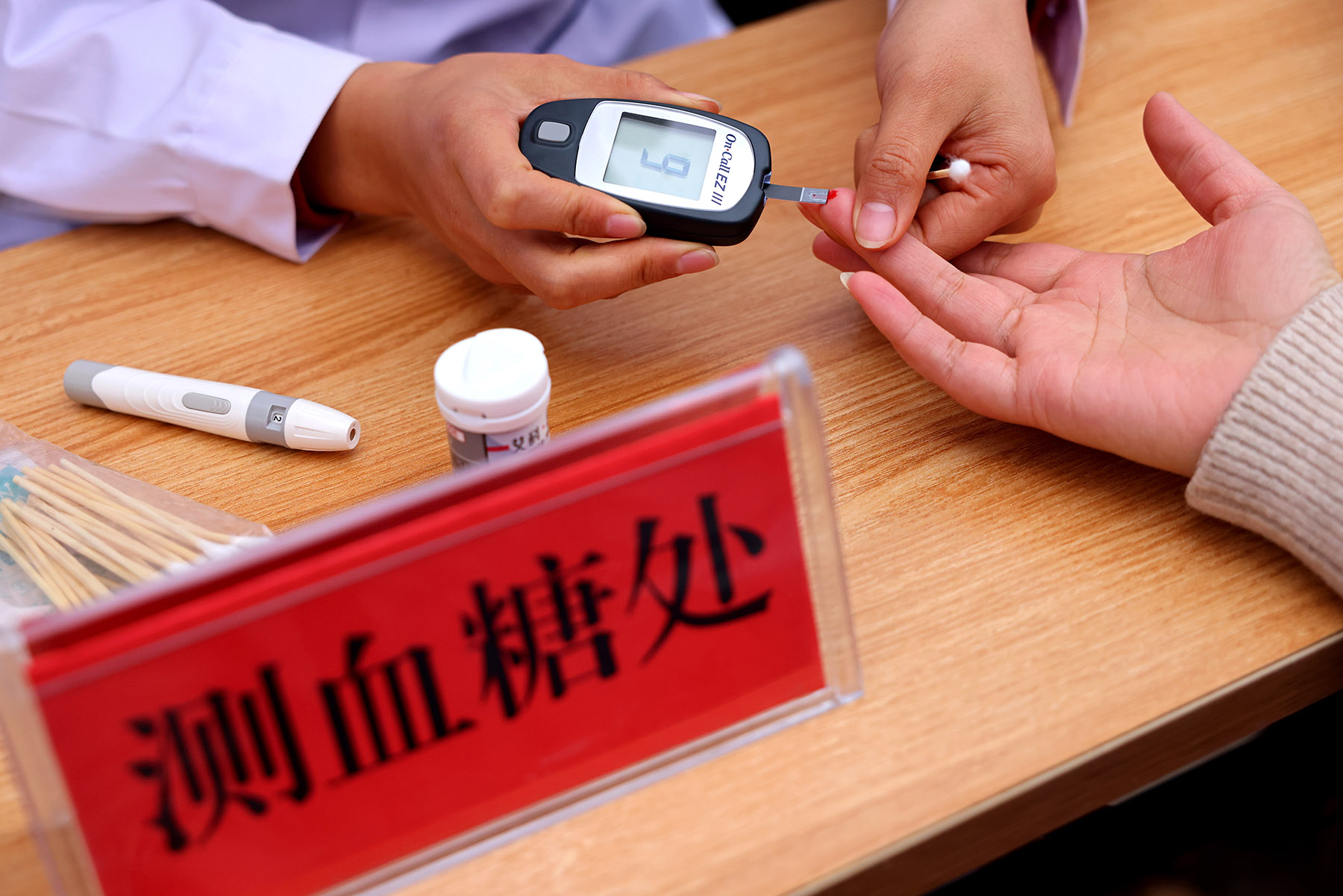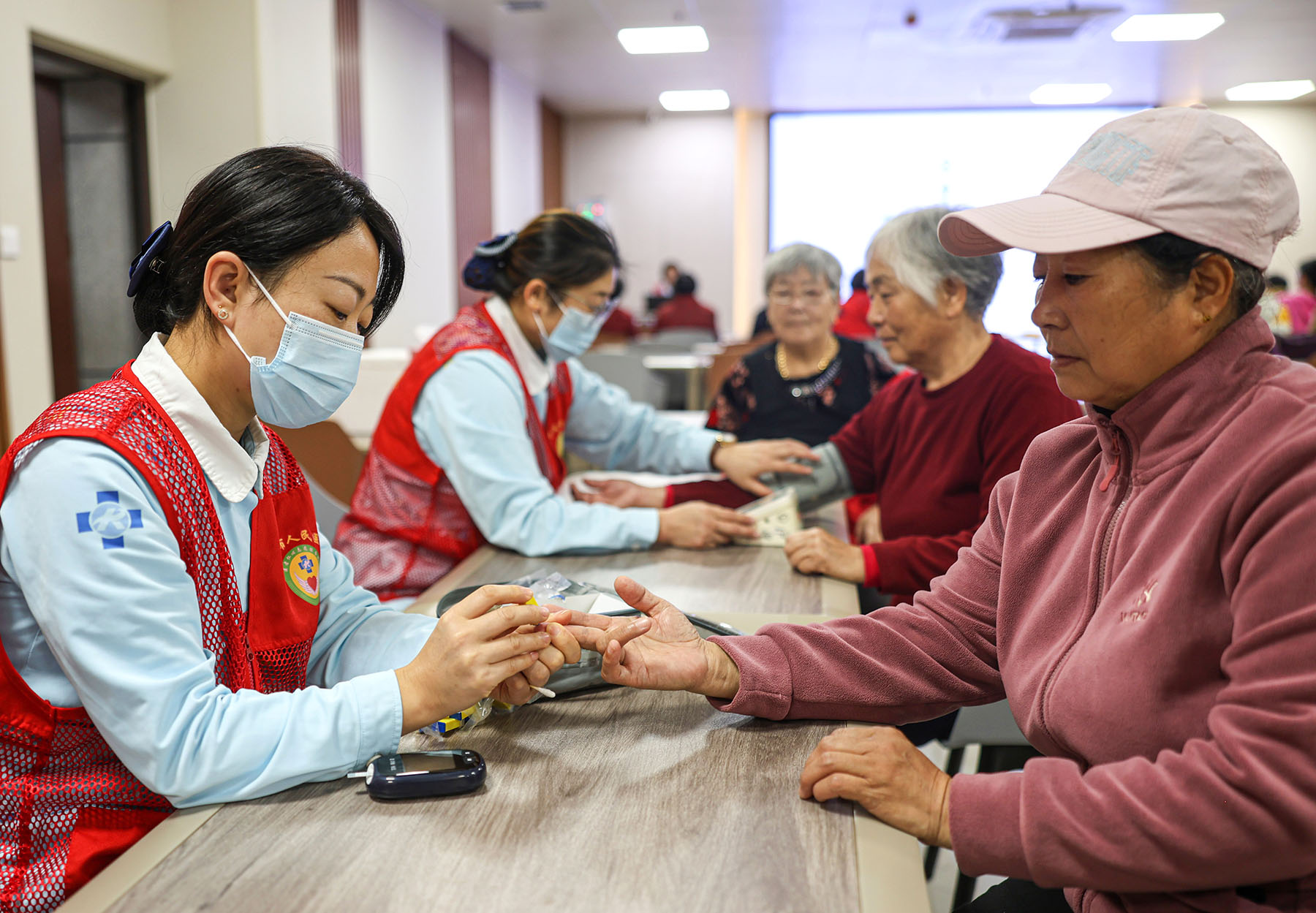Adopting healthier diets, exercise regularly, and routine medical check-ups for those with a family history of diabetes is necessary, expert stresses

Liang Jing, a 32-year-old white-collar worker in Beijing, never thought that she would get "addicted" to checking her blood sugar level from a continuous glucose monitor.
She wakes up every day, looks at her blood sugar level, and checks it before she goes to bed at night.
She uses a CGM to aid her weight loss efforts. With the device, she can see real-time data on how exercise and diet affect her blood sugar level.
Checking her blood sugar levels has become an indispensable part of her life. At work, she checks her app every few minutes, almost matching the device's three-minute intervals. During meals, she monitors her blood sugar in real-time, watching how her food intake impacts her levels. "I don't even watch TV dramas anymore. I just watch the CGM," she said.
Liang discovered that whole grains have a lesser impact on her blood sugar than white rice. If she takes a walk when her blood sugar spikes, the steep curve quickly levels out.
READ MORE: Visiting medical experts lift Xizang healthcare standards
Chinese youth are increasingly concerned about their blood sugar levels, particularly as the diabetes rate remains high and is affecting more people of the younger generations.
Currently, the main types of diabetes are type 1 and type 2. Type 1 diabetes requires daily insulin and has no known cause or prevention. Type 2 diabetes, often preventable, affects how the body uses glucose and is linked to being overweight, lack of exercise, and genetics, making up the majority of all cases. Prediabetes indicates higher-than-normal blood sugar levels, increasing the risk of heart disease, stroke, and type 2 diabetes, but it can often be reversed.
CGM devices, initially designed for managing diabetes, have now caught the attention of some young people.
A CGM is a device that attaches to the abdomen or arm. A soft needle is inserted under the skin to monitor blood sugar levels continuously. The device connects to an app via Bluetooth and generates a continuous blood sugar curve over 14 days.
On social media platforms like Douyin, the Chinese version of TikTok, videos tagged with "sugar control" have amassed 20.8 billion views, reflecting the growing interest in blood sugar management, especially among younger people.
In these videos, young individuals with abnormal blood sugar levels manage their conditions through glucose tests, food recommendations, and exercise, while those with regular blood sugar proactively control their sugar intake to aid in weight loss and overall wellness.
For Liang, weight loss has been a painful process. She often has to make great efforts to exercise more and eat less before seeing a bit of success.

The CGM has been an important tool for her weight loss efforts. The device records her food intake and every step she takes, revealing her blood sugar level. In 14 days, she wore the device and lost 2.5 kilograms.
Wang Xu, who works in Changsha, Hunan province, said she has worn CGM twice under the recommendation of a friend.
Discussions about the amount of calories each type of food contains have become very popular among young people as healthy living and body image have become more important for them, the 27-year-old said.
She often eats takeout foods and wants to keep an eye on which food can significantly increase her blood sugar level so she can avoid eating them and adjust her diet.
However, she said she has been anxious about the readings on the CGM devices and checking them uncontrollably.
She said she won't wear it all the time. After she learns about which food is healthier by monitoring her blood sugar level and forming a proper diet accordingly, she will rarely use it anymore.
Xiao Yang, a 23-year-old designer in Changsha, said he recently started to wear a CGM after finding that he had gained some weight since working in July.
"It's difficult to keep a healthy lifestyle transitioning from school life to the workplace. I find myself working out rarely, eating lots of take-out and going to bed late at night," Xiao said.
As a result, he gained more than 5 kilograms in six months, so he believes it is important for him to do something about it.
He also noticed that some of his colleagues in their 30s were beginning to have blood sugar problems during annual physical checkups, so he decided to wear a device to monitor his blood sugar.
After wearing the CGMs, he realized he needed to drink less milk tea, which contains lots of sugar, so he switched to coffee without sugar while exercising more.
CGM users share their experiences in controlling blood sugar levels on social media and creating new food and exercise strategies.
For example, they said that the correct way to drink milk tea is with 50 percent sugar and no cream, taking small sips while walking to avoid blood sugar spikes. Always eat vegetables before carbohydrates. Don't drink water during meals and wait 30 minutes after eating to drink.
However, CGMs are not without their downsides.
Zeng Li, a patient with insulin resistance in Beijing, said she feels extremely anxious about the data from the monitor to the point that fluctuations in the readings affect her physical condition.
In the first two days of wearing CGM, her blood sugar level was around 7.0 before eating and postprandial blood sugar increased to 11.2. She was worried deeply that she might develop diabetes.
She hesitated between monitoring for a few more days and going to the hospital before she looked at hundreds of online posts on the symptoms of diabetes and the blood sugar level of normal people. She could not fall asleep until 3 am in the morning and found that her blood sugar level further increased the following day.
She almost cried when she saw the number. She said she trusted the number and device more than she actually felt.

She had planned to wear them for half a month and stop for the next, but she could not bear not seeing the numbers, so she started wearing them three days afterward.
The popularity of the devices is clearly reflected in the sales numbers.
Yi Ke, a sales director for the medical company Changsha Sinocare Inc, said the market size for CGM is expanding, and more people are using the device to monitor their blood sugar.
Based on data from e-commerce platforms T-mall and JD, the sales of CGM needles increased by 63 percent year-on-year in the second half of 2024, while the sales of Sinocare's CGM needles increased by 104 percent year-on-year during the same period.
Li Guangwei, senior doctor of the endocrinology department at China-Japan Friendship Hospital, said CGMs can serve as a helpful reference for diabetic patients or those at risk, though the data isn't entirely precise.
"If abnormalities are detected, it's important to seek professional medical advice. For those using CGMs solely for weight loss, they're unnecessary. We advocate for a balanced and healthy approach to beauty, not extreme thinness," he said.
"Previously, it was mostly middle-aged or elderly people coming into the clinic. But in the past two years, I've seen a lot of young faces worried about fatigue, poor sleep, and elevated blood sugar," said Cheng Xiaoyun, senior doctor of the Endocrinology Department at Shanghai Tenth People's Hospital.
Excessive consumption of high-fat, high-sugar foods, lack of exercise, and unhealthy lifestyle habits are major causes of diabetes. Young diabetics are also more prone to complications, said Li.
ALSO READ: Stigma lifted on dealing with workplace stress
He recommends that young people adopt healthier diets, exercise regularly, and undergo routine medical check-ups, especially those with a family history of diabetes. By managing their health through evidence-based practices, they can reduce the risk of diabetes and its complications.
Ma Jinju, head of the diabetes outpatient department of Sinocare Health, said there has been an apparent increase in the number of people using CGMs in recent years, as more young people are being diagnosed with diabetes and they pay more attention to their health.
In the age of information, it is also easier for people to get health information about the functions of such products, she said.
Moreover, as the symptoms of early diabetes and prediabetes are not easily noticeable, such devices are very important for people to get a hold of their situation and seek medical treatment in time, she said.
Besides, CGMs can also help people prevent sudden spikes or drops in their blood sugar levels, which is significant in reducing harm to their blood vessels and other vital organs, she said.
However, she also stressed that people who wear the device should not be too concerned about the readings. Checking the numbers every two or three hours is enough, and healthy people do not need to wear the device all the time, she added.
Li Boyu contributed to this story.


